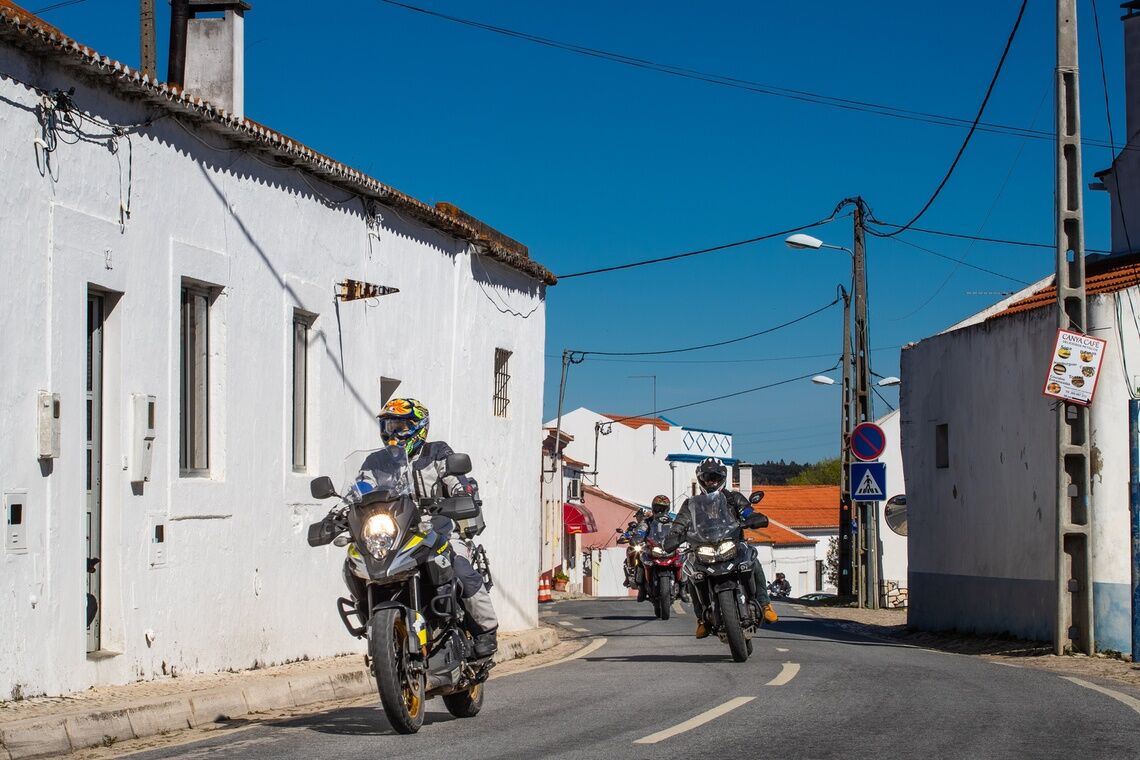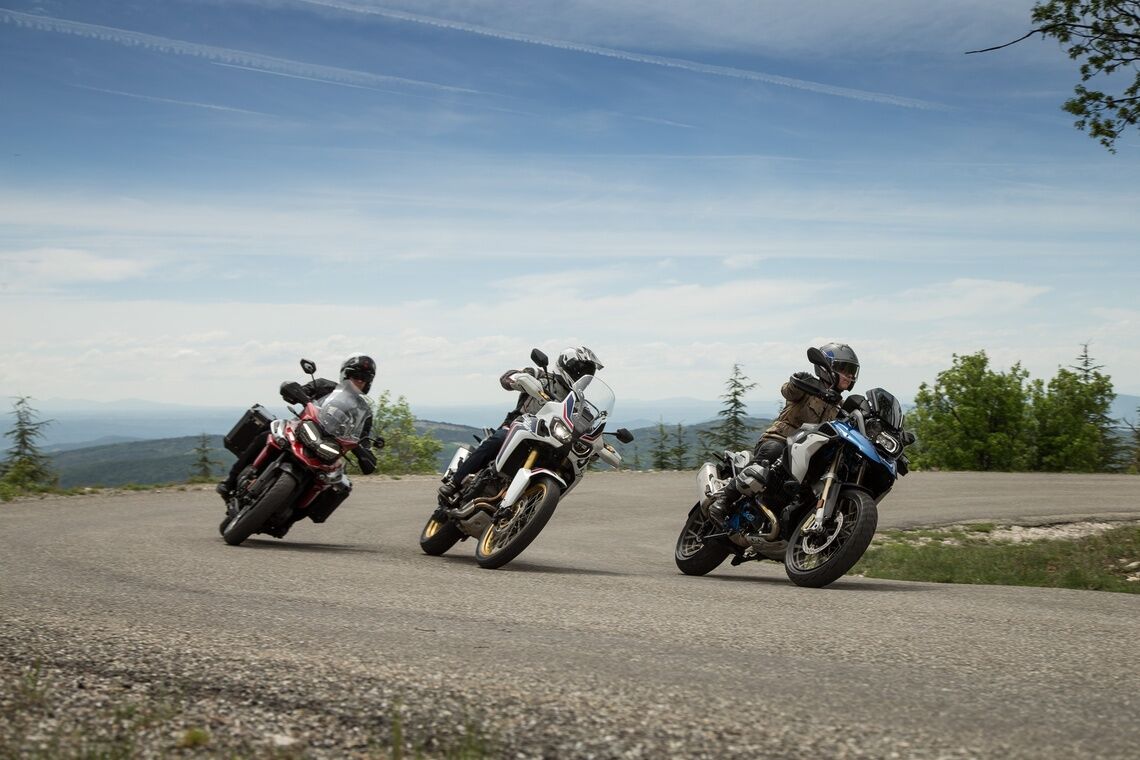Riding in a motorcycle group
Keep the right distance
Riding in a group means adopting different driving habits. You need to ride close enough to each other to avoid vehicles coming between you, while keeping a reasonable distance to allow time for emergency braking. To calculate the ideal safety distance, count 2 seconds between each bike.

How to follow each other on the road?
Spontaneously, a group of motorcyclists tends to ride in single file, but this raises two problems:
- a lack of visibility: it is difficult to see beyond the motorcycle in front of you and to anticipate obstacles on the road.
- a braking problem: if there is a sudden stop further ahead, the only braking distance you have is the one between you and the motorcycle in front.
The best group formation is the staggered formation (like the tiles of a checkerboard). Each motorcycle moves to the side of the one in front of it. In combination with the necessary safety distance, this formation allows you to move aside in case of an obstacle without the risk of a collision. This way, you maintain a good view of the road ahead.
Adapt to different road types
Of course, this formation can only be applied on sufficiently wide roads. On small curvy roads, you may have to settle for a single file formation, with extended safety distances. Unless you are part of an experienced group that can maintain the staggered formation on bends, it is best to go through all the bends in a single file and then reform the staggered formation when the road widens again.

Communicate!
Always make your intentions clear to those around you, especially if you are changing your position or direction. Use your indicators, turn your head, check your blind spots, wave your hands if your helmets are not equipped with an intercom. Do everything possible to ensure that you are seen and understood by other road users. Do not rush through your manoeuvres. Riding in a group does not allow you to travel more recklessly than if you were riding alone, on the contrary.
Rely on your own judgement
Just because the motorcycle in front of you has performed a manoeuvre does not mean you should blindly repeat it. Keep your own analysis of the situation and act according to your own judgement.
The convoy order
It should be kept in mind that not all motorcycles in a group ride at the same speed. Because of safety distances and reaction times, a group of motorcycles works according to the elastic principle. When the first motorcycle accelerates, the last one will accelerate a little later. The larger the group, the greater the differential. Place the less powerful or heavier bikes and the less experienced riders at the beginning of the convoy. The rhythm will be more linear than at the end of the group where the more experienced riders will be able to follow whatever happens.

The road captain (or leader)
The road captain must anticipate for the whole convoy and drive smoothly to reduce this elastic effect. When entering a town, for example, he must decelerate as soon as he sees the speed sign so that everyone enters the town in a group and respects the limit.
Keep an eye behind you
Whatever the size of your group, it is essential to look regularly in your rear-view mirrors to check that the bike behind you is still there. Slow down if you lose sight of them. If the whole group follows this rule, the motorcycle in front of you will do the same and so on, until the motorcycle that opens the convoy. You can do this check at every intersection or change of road. This way you should not lose anyone during the journey.
Group rules
Riding in a group implies certain rules. The usual rule is that no one should change places and that everyone should return to their own place in the convoy after the stops. The most important thing is to agree on the rules of riding for your group before the start, regardless of the experience and skill of the riders present, to ensure fun and safety for all.
Knowing how to lead
At your departure briefing, clearly identify the roles of those who will be leading the group. The person leading the way should have the most experience. He or she must be able to follow the route, indicate it to the others, and keep an eye on the traffic, the road, its users and the following motorcycles, anticipating stops in large enough areas, without disturbing other riders and risking a collision.
The motorcycle that closes the convoy requires just as much experience and vigilance. It must be able to keep pace with the impact of the elastic effect. Absolute rule: no one should ever be behind him or her.
Distinctive features
When riding in a group, the opening motorcycle should be able to see the closing motorcycle, at least from time to time, to ensure that everyone is following. It is therefore recommended that both riders wear a fluorescent waistcoat or something distinctive so that they can be easily recognised. If this is not possible, as with a large group, the motorcycle that flies around comes into play to pass messages from one end of the convoy to the other.
Ready to go on your trip? Don't forget to check your tyre pressure.